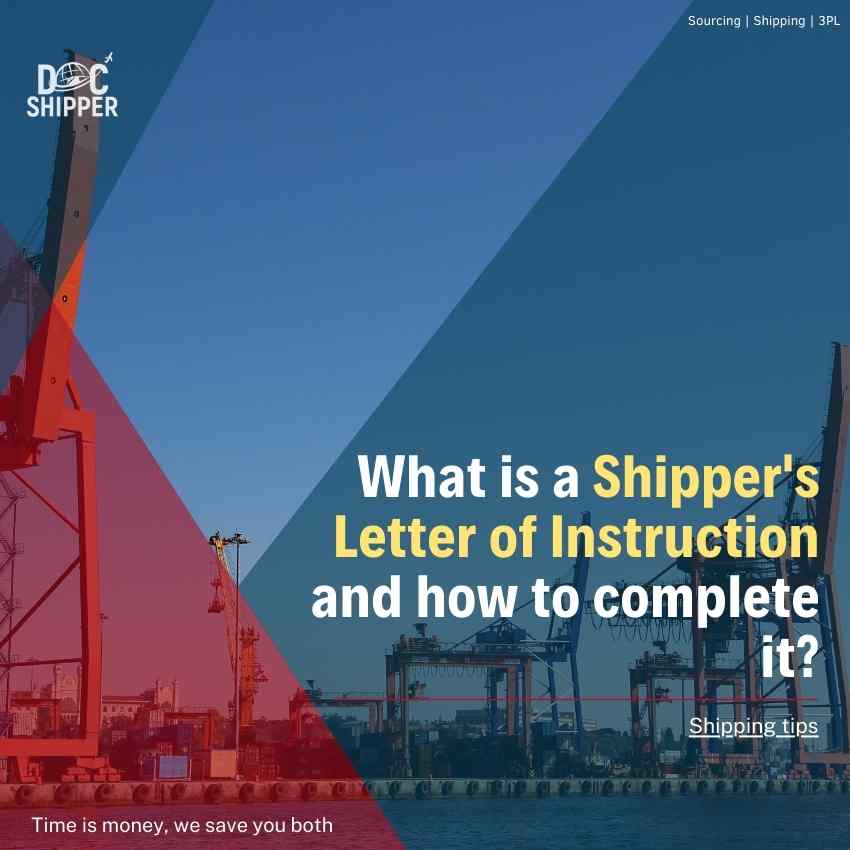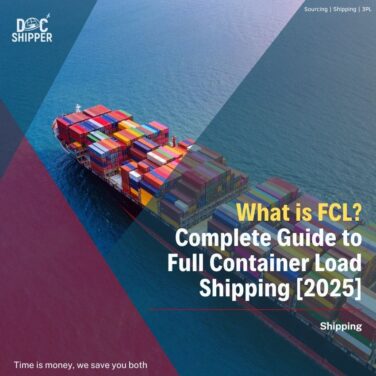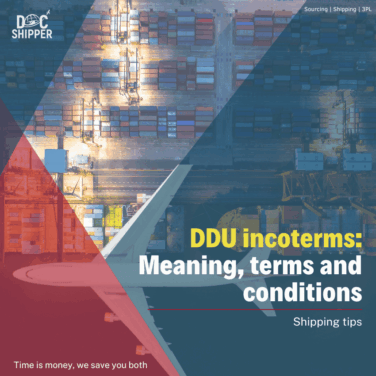The Shipper’s Letter of Instruction (SLI) helps exporters provide agents and forwarders comprehensive instructions. This letter provides vital shipping, commodities handling, and customs information. on guarantee seamless and effective shipping, we’ll explain the shipper’s letter of instruction and give a practical guidance on completing it. SIAM Shipping, an international transportation specialist, offers customized sourcing, shipping, and 3PL services. We excel in rail, ocean, air, and road shipping and prioritize efficiency and client satisfaction.
What is a shipper’s letter of instruction?
The Purpose of a Shipper’s Letter of Instruction

A Shipper’s Letter of Instructions (SLI) is a document used by exporters to provide specific instructions to the agents or forwarders handling their shipments. The exporter may include detailed information on shipment, handling, and storage, as well as document requirements, in this document. With the SLI, the exporter can monitor and direct the shipping process to guarantee that his products are treated properly. Safe and effective product handling reduces the potential for loss or delay. Foreign trade compliance is improved, and orders are fulfilled more quickly with the help of SLI because of the clear lines of communication it establishes between the exporter and the many stakeholders in the supply chain.
Why should you fill in a letter or instruction to sender?
There are a number of key reasons why it is essential to complete a shipper’s letter of instructions. To begin with, it facilitates constant and accurate interaction between the exporter and the forwarders or agents responsible for handling the goods. SLI ensures accurate order fulfillment by reducing the risk of misunderstanding the exporter’s needs and expectations. In addition, SLI supports export control by enabling the exporter to easily share relevant information with the relevant authorities. Electronic filing of export data contributes to both regulatory compliance and product traceability. By accurately completing the SLI, the exporter can ensure compliance with foreign trade standards and regulations, thus avoiding any legal problems or shipping delays.
Who is responsible for the sender’s letter of instruction?
The exporter or shipper is responsible for completing the Shipper’s Letter of Instructions (SLI). They are responsible for providing all the specific information and instructions needed to complete the order as the initiator of the shipment. By outlining all agreed conditions and shipping dates, the SLI functions as a guide for the forwarder or agent in charge of the shipment, and speeds up the transportation of items. The SLI is an important tool enabling the exporter to provide special instructions for the shipment. The exporter and other parties involved, the intermediate and final consignee, the forwarder and carrier, and any special packing, handling or paperwork instructions must all be included. When an exporter provides a forwarder with complete and accurate shipping details, the forwarder can prepare and execute the shipment according to SLI specifications.
How to complete the SLI?
Since the information contained in an Sender’s Letter of Instructions (SLI) must be comprehensible and comprehensive, it’s essential to adopt a systematic approach when filling out one of these forms. Here are the most important steps to take for a good SLI:
Siam Shipping Alert
Add the details related to the Shipper and Consignee

The first step is to identify the sender by name, address, and other means of contact. The recipient’s information, including their name, address, and contact information, should be provided in the same way.
Complete the “notify party” with required information
The information of the party to be notified of the arrival of the cargo must be entered into the “notify party” area. Someone like a freight broker or an intermediary consignee could fall within this category. Identifying information like name, address, and phone number should be included.
Make sure to include the departure and Destination
It is essential that the shipment’s point of departure as well as its ultimate location be precisely defined. When providing a shipping address, ensure that the postcode, city, and country are all included.
Detail Hazardous Cargo regulations and Challenges

If the cargo contains dangerous products, it is required by law to give specific information on the nature of the dangers contained inside. Specify the transit and handling requirements, including the danger rating, UN code, permitted packaging, and handling precautions.
Enlist Special Instructions
The SLI should explicitly explain any particular instructions for freight handling. Some cargoes have strict packing, handling, temperature, and delivery window requirements.
Add the Product descriptions, their weight, and measurements
Include information on the quantity, weight, and dimensions of the items you’re selling in addition to the specific kind of things you’re selling. Without these details, the carrier cannot ensure that the handling and loading of the cargo will be safe.
Detail the charges payable section
Indicate in this area who will be paying for what portion of the shipping expenses (including but not limited to freight, customs, and clearing fees). If the carrier will be responsible for these fees, please state it clearly. Please indicate if the shipper, the consignee, or a third party will be responsible for these charges.
Complete the Commercial Value section
For customs reasons, please provide the fair market value of the item. This may include the cost of the items themselves, as well as any insurance premiums or other fees connected with the business deal.
Consider all the Destination Requirements
Take into mind the destination country’s unique documents, import permission, sanitary or phytosanitary certificate, limitation, and other regulations. If you want to get your items through customs quickly and easily, be sure to abide by the current rules.
Finish by adding the Signature & Date
After you have correctly completed all areas of the SLI, you must sign it as the shipper and provide the submission date. The sender’s signature verifies the authenticity of the information submitted and their agreement to the criteria outlined in the SLI. Complete the Shipper’s Letter of Instruction in accordance with these guidelines to guarantee effective communication and timely cargo processing in accordance with all applicable international trade norms and procedures.
The parties involved in the contract of the Shipper’s Letter Of Instruction
Several entities are engaged in the contract of carriage and cargo management when a Shipper’s Letter of Instruction (SLI) is issued. These are the primary players:
Intermediate Consignee
The intermediate consignee is a third entity in the logistics chain between the sender and the receiver. Temporary receipt of goods prior to its ultimate delivery may be the responsibility of a freight broker, a transit warehouse, or another organization.
Ultimate Consignee
At its ultimate destination, the shipment will be received by the final consignee. It might be an importer, distributor, retailer, or any other business that placed the order and will ultimately be responsible for the items.
Forwarding Agent
Freight forwarders are businesses that handle and coordinate shipments across international borders. It coordinates the various forms of transportation, keeps tabs on the shipment, and verifies that all required paperwork has been completed and submitted by the shipper.
Inland Carrier
Transport inside the country of origin or destination is within the purview of the domestic carrier. The organization responsible for transporting the items from the site of pickup or delivery to the terminal or airport may operate on land, sea, or air.
Validated License no. VS General License symbol
When determining whether or not to exercise export control, the SLI ought to take into account both the verified license number and the generic licensing symbol. The reference to the formal export permission that was provided by the relevant authorities is the validated license number. The generic license symbol will be placed on the shipping paperwork if the shipment does not need a specialized export license since the cargo does not require one.
Export Control Classification Number (ECCN) details
Products are given unique identification numbers called Export Control Classification Numbers (ECCN). The export limitations and control category for this item are shown. To be in accordance with export control requirements, it is necessary to provide the ECCN number for each product in the SLI. It is possible to guarantee effective and compliance execution of the SLI contract by knowing the roles and duties of these many stakeholders, as well as the licensing and classification components of export control.
Siam Shipping Tip
SIAM advice: If you’d like to know more about how shippers give agents or forwarders the letter of direction, SIAM, your shipping aisle, is here to help. Please contact us and one of our experts will get back to you.
Is the letter of instruction required to export smoothly?
 Does Export Need SLI? A full SLI is required for any goods going overseas. Export shipping instructions are a formal means of communicating with the receiving party on how and where to process your goods. It also authorizes the forwarder to handle export compliance and customs formalities on the shipper’s behalf. It is not required by law to have a SLI. However, the degree of dependence varies from one to nation, and therefore, each nation has its own set of laws and restrictions on international commerce. It is both a purchase order and a receipt for services rendered by the carrier. Before sending out any shipments, exporters must fill out this form.
Does Export Need SLI? A full SLI is required for any goods going overseas. Export shipping instructions are a formal means of communicating with the receiving party on how and where to process your goods. It also authorizes the forwarder to handle export compliance and customs formalities on the shipper’s behalf. It is not required by law to have a SLI. However, the degree of dependence varies from one to nation, and therefore, each nation has its own set of laws and restrictions on international commerce. It is both a purchase order and a receipt for services rendered by the carrier. Before sending out any shipments, exporters must fill out this form.
Conclusion
Overall, the importance of the shipper’s letter of instruction cannot be overstated in the context of international cargo management. Shippers may reduce the likelihood of miscommunication and delays by filling it out thoroughly and precisely. In addition, it accounts for the special problems and rules that come with transporting hazardous materials. When it comes to shipper’s instructions, SIAM is the gold standard for tailor-made solutions. Find a logistics partner that can accommodate all of your needs in order to optimize your shipments. Contact us!
FAQ | What is a Shipper's Letter of Instruction and how to complete it ?
Read more
Looking for more? These articles might interest you:
SIAM Shipping info: Do you like our article today? For your business interest, you may like the following useful articles :
Need Help with Logistics or Sourcing ?
First, we secure the right products from the right suppliers at the right price by managing the sourcing process from start to finish. Then, we simplify your shipping experience - from pickup to final delivery - ensuring any product, anywhere, is delivered at highly competitive prices.

Fill the Form
Prefer email? Send us your inquiry, and we’ll get back to you as soon as possible.
Contact Us








